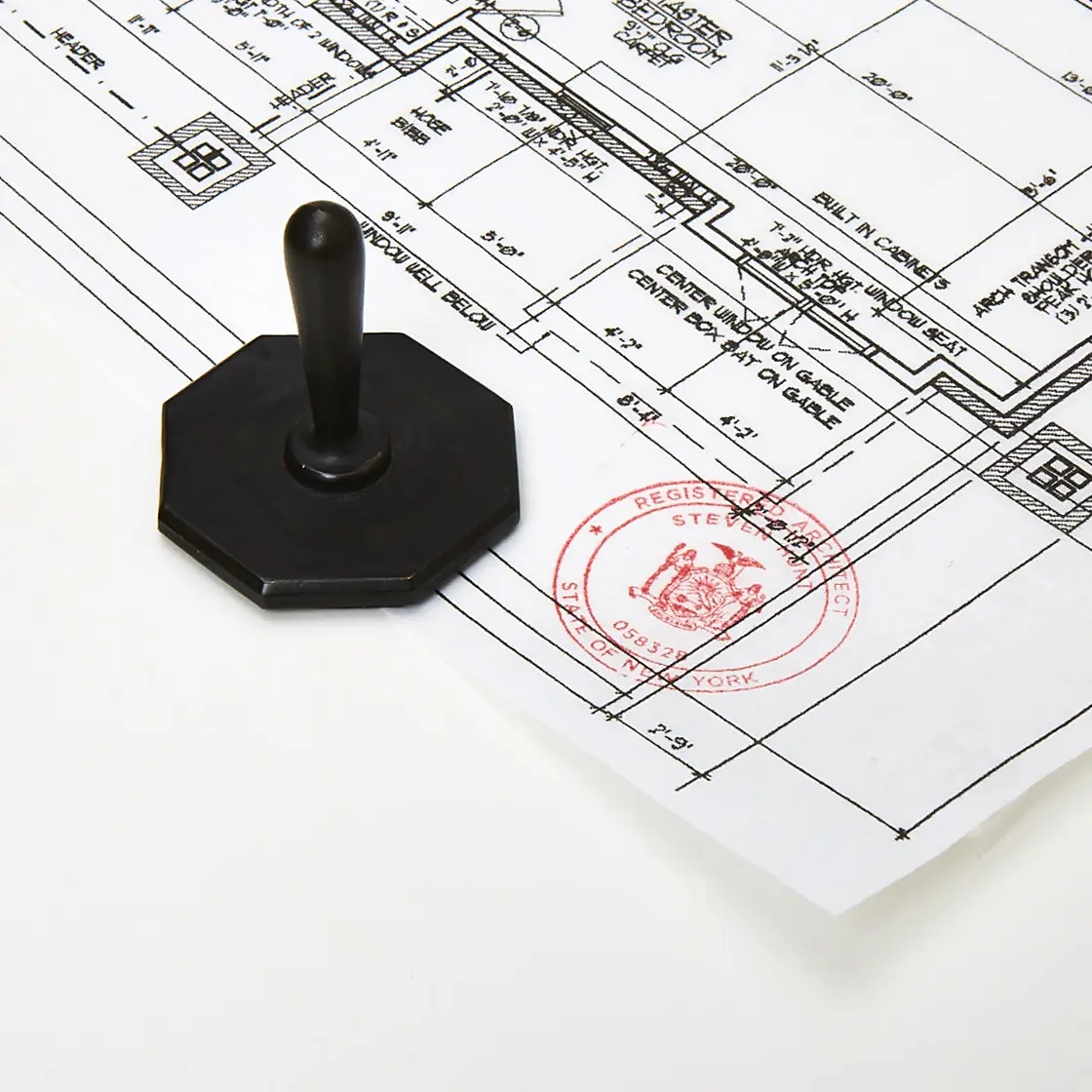Well designed Architect stamps for your architect license seal
Understanding the importance of an architect seal stamp
When it comes to the world of architecture, attention to detail is key. An architect seal stamp may seem like a small tool, but its significance cannot be overstated. This stamp serves as a symbol of professionalism and credibility in the industry. It’s not just a mark; it’s a representation of trust and expertise.
The architect seal stamp is more than just a formality; it is a legal requirement in many jurisdictions. It holds the weight of responsibility and serves as a guarantee that the structural integrity and design of a building have been overseen by a certified and licensed professional. Its presence on official documents instills confidence and reassurance.
In a field where precision and accuracy are paramount, the architect seal stamp acts as a final touch, signifying that an architect’s work is complete. It’s a mark of quality that sets professionals apart and solidifies their commitment to excellence. Understanding the role and importance of this stamp is crucial for every architect.
Key features to look for in architect stamps
Precision is non-negotiable when it comes to architect stamps. Opt for a stamp that delivers crisp and consistent impressions, maintaining the integrity of your designs and documents. Accuracy in stamping is essential to convey professionalism and attention to detail in every architectural plan and drawing.
In addition to functionality, the aesthetic appeal of an architect stamp should not be overlooked. A well-designed stamp not only leaves a clear impression but also reflects the architect’s style and professionalism. Choosing a stamp with a sleek, modern design enhances the overall presentation of architectural work.
Architect stamps featuring anti-tilt technology provide stability and prevent smudging, ensuring flawless imprints on various surfaces. Investing in a stamp with advanced features guarantees consistent and high-quality results, meeting the demanding standards of the architectural field.
Choosing the right design for your architect license seal
Incorporating essential information such as your name, license number, and the title ‘Architect’ is fundamental in the design process. These details not only fulfill legal obligations but also establish your identity and credentials as a qualified architect. The design should communicate professionalism and authority.
Consider the size and shape of the seal when selecting a design. The seal should be proportionate to the documents it will be stamped on, ensuring visibility and clarity of the impression. Choosing a design that is versatile and adaptable to different paper sizes and formats enhances the practicality of the seal.
The color scheme of the design plays a crucial role in creating a cohesive and harmonious look for your architect license seal. Opt for colors that complement your branding and convey a sense of professionalism. A well-coordinated color palette enhances the visual appeal and memorability of the seal.
Ultimately, the right design for your architect license seal should reflect your individual style and professionalism. It should be a visual representation of your expertise and attention to detail, leaving a lasting impression on clients, colleagues, and stakeholders in the architectural industry.
Customization options to personalize your architect stamp
Customization options offer architects the opportunity to personalize their stamp and make it uniquely their own. Adding a logo to the stamp can enhance brand recognition and create a professional image. A customized stamp communicates a sense of authenticity and attention to detail.
Incorporating your signature into the stamp design adds a personal touch and reinforces the authenticity of the seal. Including a signature conveys authority and responsibility, establishing a direct connection between the architect and the stamped document. Personalizing your stamp with a signature reinforces professionalism.
Text customization allows architects to include specific information on the stamp, such as contact details or additional certifications. Custom text can provide comprehensive information within the limited space of the stamp, offering clarity and transparency to recipients of stamped documents.
Embossing options provide a tactile and visual enhancement to architect stamps, creating a professional and sophisticated appearance. Embossed seals add a dimension of elegance and prestige to documents, elevating the overall presentation of architectural plans and drawings.
Selecting a stamp size that suits your needs is essential for customization. Whether you require a compact stamp for portability or a larger stamp for detailed impressions, choosing the right size ensures optimal functionality and convenience. Tailoring the size to your specific requirements enhances the usability of the stamp.
Ensuring compliance and professionalism with your architect seal
Compliance with industry regulations is a fundamental aspect of using an architect seal. The seal signifies that the architect’s work complies with the established standards and codes governing the profession. Ensuring adherence to regulations reinforces professionalism and integrity in the architectural field.
Maintaining the integrity of the architect seal is crucial for upholding ethical standards and building trust with clients and stakeholders. Regularly inspecting the seal for wear and tear, and replacing it when necessary, demonstrates a commitment to precision and reliability in architectural documentation.
The architect seal is a reflection of the architect’s expertise and commitment to quality in every project. By using the seal consistently and in accordance with regulations, architects reinforce their dedication to excellence and uphold the professional standards expected in the field. The seal is not just a stamp; it’s a symbol of integrity and competence.
In conclusion, the architect seal stamp serves as a cornerstone of professionalism and credibility in the architectural profession. Choosing a well-designed stamp, customizing it to reflect your personal brand, and using it in compliance with regulations are essential steps in establishing your identity as a skilled and reputable architect.

